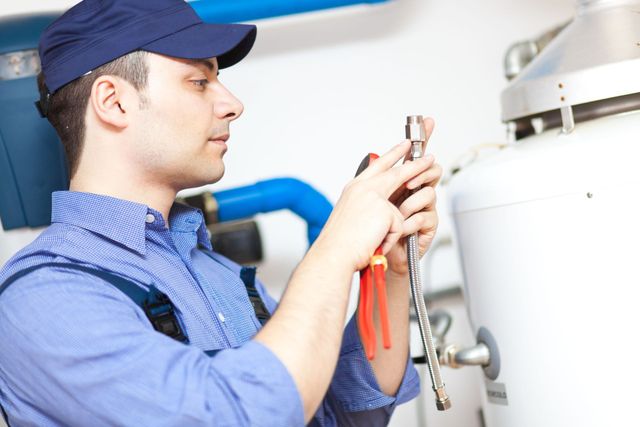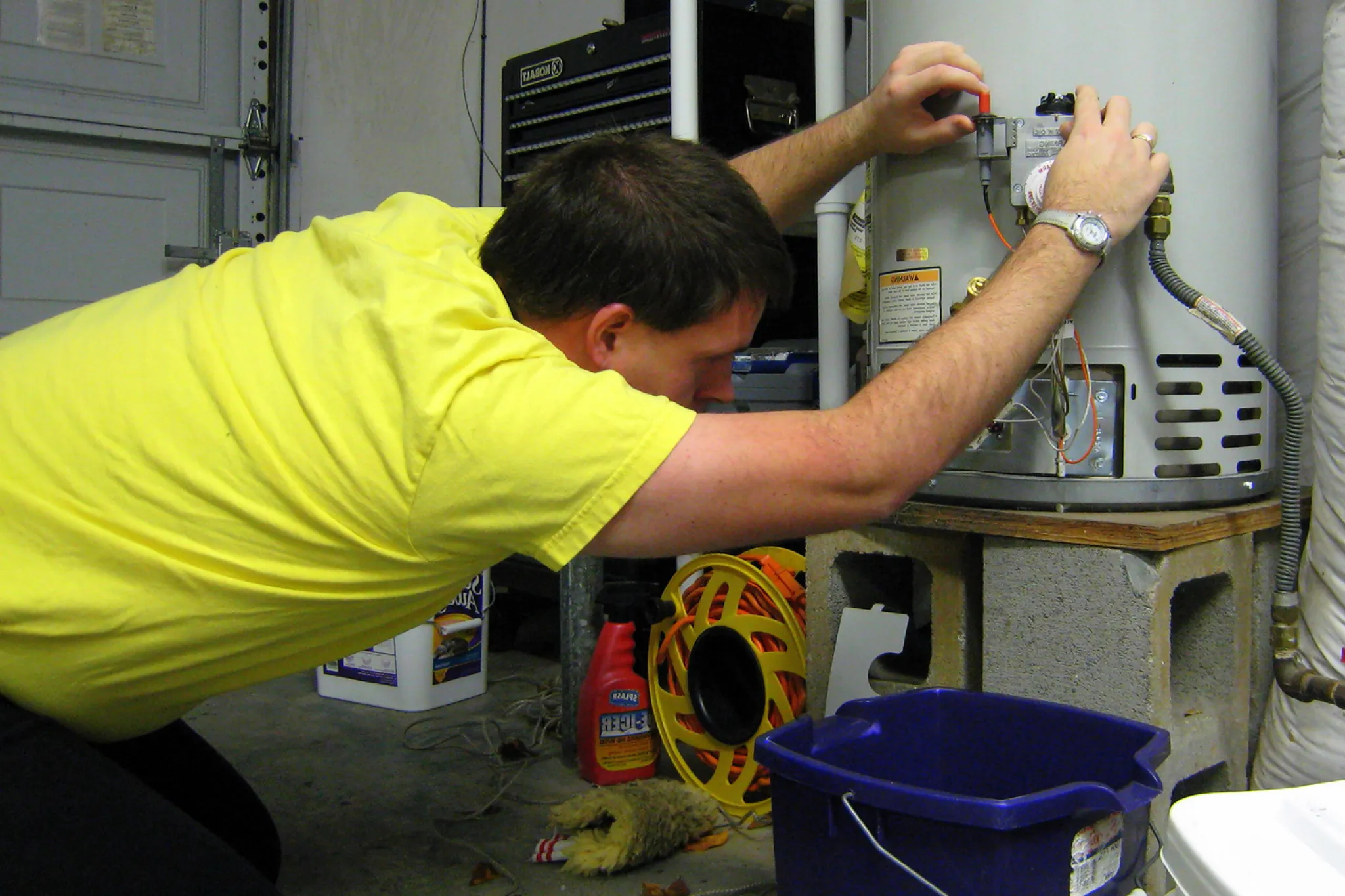Straightforward Methods to Care for Your Home's Hot Water System Properly
Straightforward Methods to Care for Your Home's Hot Water System Properly
Blog Article
Just how do you actually feel with regards to Tips on Maintaining a Water Heater?

Warm water is essential for daily convenience, whether it's for a rejuvenating shower or washing recipes. To guarantee your hot water system runs efficiently and lasts longer, normal maintenance is key. This write-up supplies useful tips and understandings on exactly how to maintain your home's warm water system to prevent disruptions and pricey repair work.
Introduction
Maintaining your home's warm water system may seem challenging, but with a couple of straightforward steps, you can guarantee it operates efficiently for many years to find. This overview covers whatever from understanding your hot water system to do it yourself maintenance suggestions and understanding when to contact expert help.
Importance of Maintaining Your Warm Water System
Routine upkeep not only prolongs the life expectancy of your hot water system but likewise guarantees it operates successfully. Neglecting upkeep can lead to reduced efficiency, higher power bills, and also early failure of the system.
Indications Your Hot Water System Requirements Upkeep
Knowing when your hot water system requires attention can avoid significant concerns. Look out for indications such as irregular water temperature, unusual sounds from the heating system, or rustic water.
Recognizing Your Hot Water System
Before diving into upkeep jobs, it's useful to comprehend the basic components of your hot water system. Commonly, this includes the water heater itself, pipes, anode rods, and temperature level controls.
Monthly Maintenance Tasks
Routine regular monthly checks can aid capture small issues before they rise.
Purging the Water Heater
Purging your hot water heater gets rid of debris build-up, enhancing efficiency and prolonging its life.
Checking and Replacing Anode Rods
Anode rods stop rust inside the tank. Examining and replacing them when worn is critical.
Evaluating and Readjusting Temperature Level Setups
Adjusting the temperature settings guarantees ideal performance and safety.
DIY Tips for Maintenance
You can carry out a number of maintenance tasks yourself to maintain your warm water system in leading problem.
Looking for Leakages
Consistently evaluate pipelines and links for leaks, as these can result in water damage and higher bills.
Testing Stress Alleviation Valves
Evaluating the pressure relief valve ensures it operates appropriately and stops extreme pressure buildup.
Insulating Pipelines
Protecting hot water pipelines reduces warmth loss and can conserve power.
When to Call an Expert
While DIY upkeep is valuable, some concerns need expert knowledge.
Complex Concerns Needing Professional Aid
Instances include major leakages, electrical problems, or if your hot water heater is regularly underperforming.
Routine Specialist Maintenance Benefits
Specialist maintenance can consist of complete evaluations, tune-ups, and ensuring conformity with safety standards.
Verdict
Routine upkeep of your home's hot water system is crucial for effectiveness, longevity, and expense savings. By adhering to these ideas and knowing when to look for professional assistance, you can ensure a reliable supply of warm water without unexpected interruptions.
Water Heater Maintenance: The Basics
Maintaining your water heater will ensure it operates efficiently and has a longer lifespan. Neglecting regular maintenance can lead to costly repairs and an even bigger chunk of your savings if you have to replace it sooner than necessary. But there’s good news: Most water heater maintenance tasks are relatively simple and easy for homeowners with basic DIY skills.
Flush the Water Heater
Over time, sediment and minerals can build up in the tank, reducing its efficiency and potentially causing damage. To flush the tank, turn off the power or gas supply, attach a hose to the drain valve near the bottom and open the valve to drain the water until it runs clear. Ideally, flush the tank annually.
Replace the Anode Rod
The anode rod is a sacrificial metal rod that helps prevent corrosion inside the tank. Inspect and replace it every three to five years or per the manufacturer's recommendation. To replace the anode rod, turn off the power or gas supply, drain a few gallons of water from the tank, unscrew the old rod and replace it with a new one. If the anode rod is significantly corroded or covered in calcium buildup, it's a sign the water heater may need to be replaced soon.
Tune-Up
A yearly tune-up can help identify potential issues and ensure your water heater operates at peak efficiency. This typically involves checking the thermostat, burner assembly (for gas heaters) and any other components specified by the manufacturer. During a tune-up, the technician may also clean the burner and adjust the pilot light (for gas heaters) or examine the heating elements (for electric heaters).
How to Maintain Your Water Heater
Insulate the tank. Insulating the tank can improve energy efficiency and reduce heat loss, saving you money on energy bills. You can purchase precut insulation blankets designed specifically for water heaters or use standard fiberglass insulation wrapped securely around the tank. Check the temperature. The recommended water temperature for most households is around 120 degrees Fahrenheit (49 degrees Celsius). Higher temperatures can increase energy costs and potentially cause scalding. Use a kitchen thermometer to check the temperature at the faucet nearest the water heater. Monitor water pressure. Excessive water pressure can strain the water heater and cause leaks or even tank failure. Install a pressure-reducing valve if necessary. The ideal water pressure range is between 60 and 70 PSI (pounds per square inch). Test the temperature and pressure (T&P) relief valve. The T&P relief valve is a safety feature that releases pressure if the tank gets too hot or the pressure builds up too high. Test it annually by lifting the lever and allowing a small amount of water to release. Replace the valve if it doesn't release water or reseal properly. Check for leaks. Regularly inspect the tank, pipes and fittings for leaks or corrosion. Deal with issues promptly to prevent further damage. Even a small leak can lead to significant water damage over time. Consider a tankless water heater. If your traditional tank-style water heater is nearing the end of its lifespan ( typically 10 years), consider replacing it with a tankless water heater. These units heat water on demand, reducing standby energy losses and potentially saving you money on your energy bills. Schedule professional maintenance. While homeowners can perform many water heater maintenance tasks, it's still a good idea to schedule professional maintenance every few years. A plumber or HVAC technician can thoroughly inspect the unit, identify potential issues and ensure it operates safely and efficiently. https://www.homeserve.com/en-us/blog/home-improvement/hot-water-heater-maintanence/

I came across that page on How to Maintain Your Water Heater & Prolong its Life while surfing around the web. You should set aside a second to share this blog if you enjoyed reading it. I enjoy your readership.
Visit Our Site Report this page